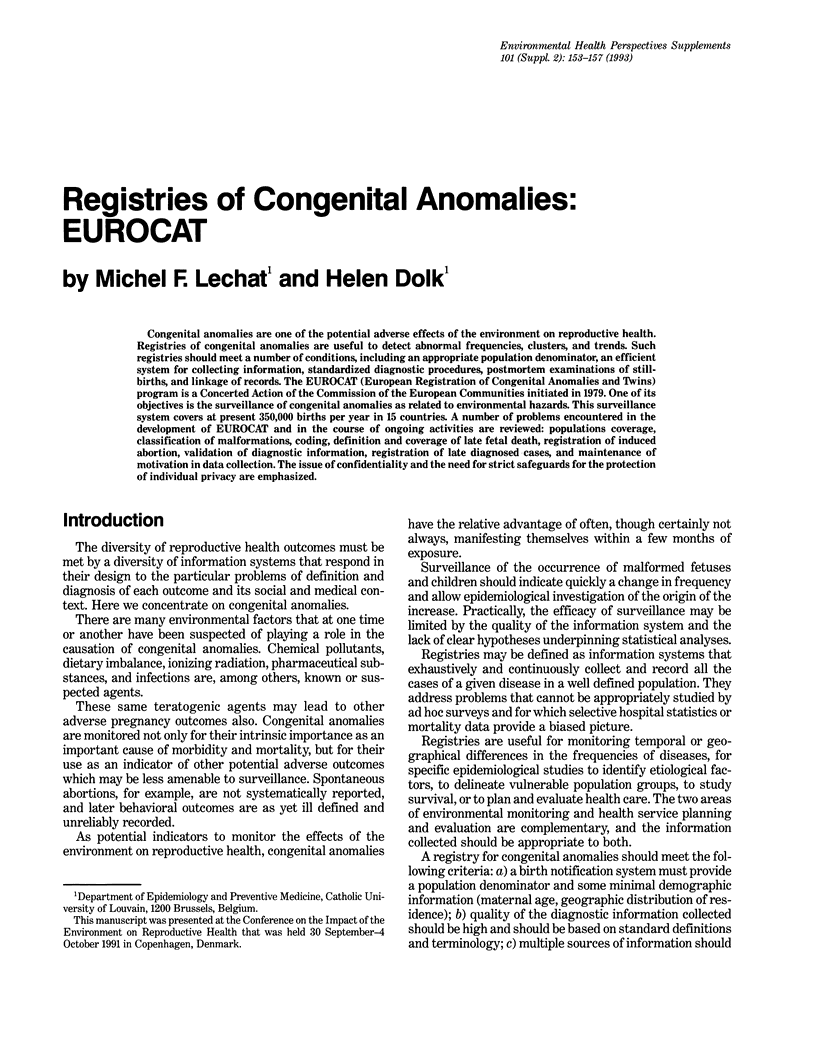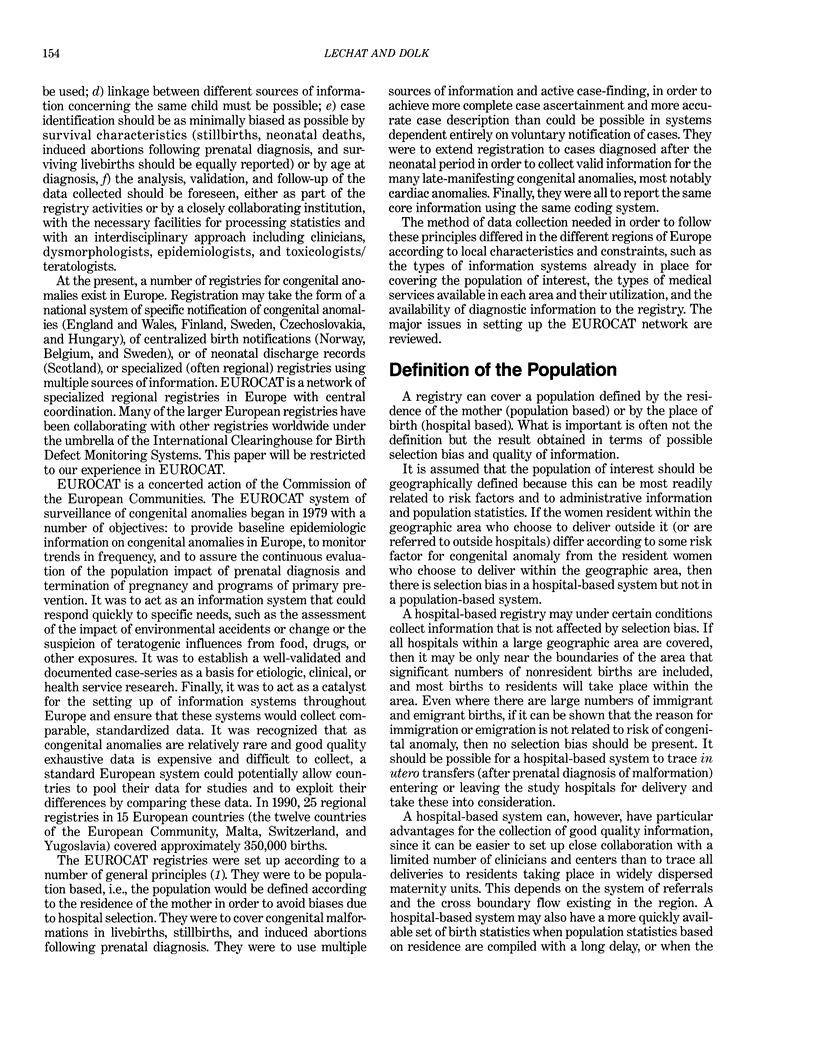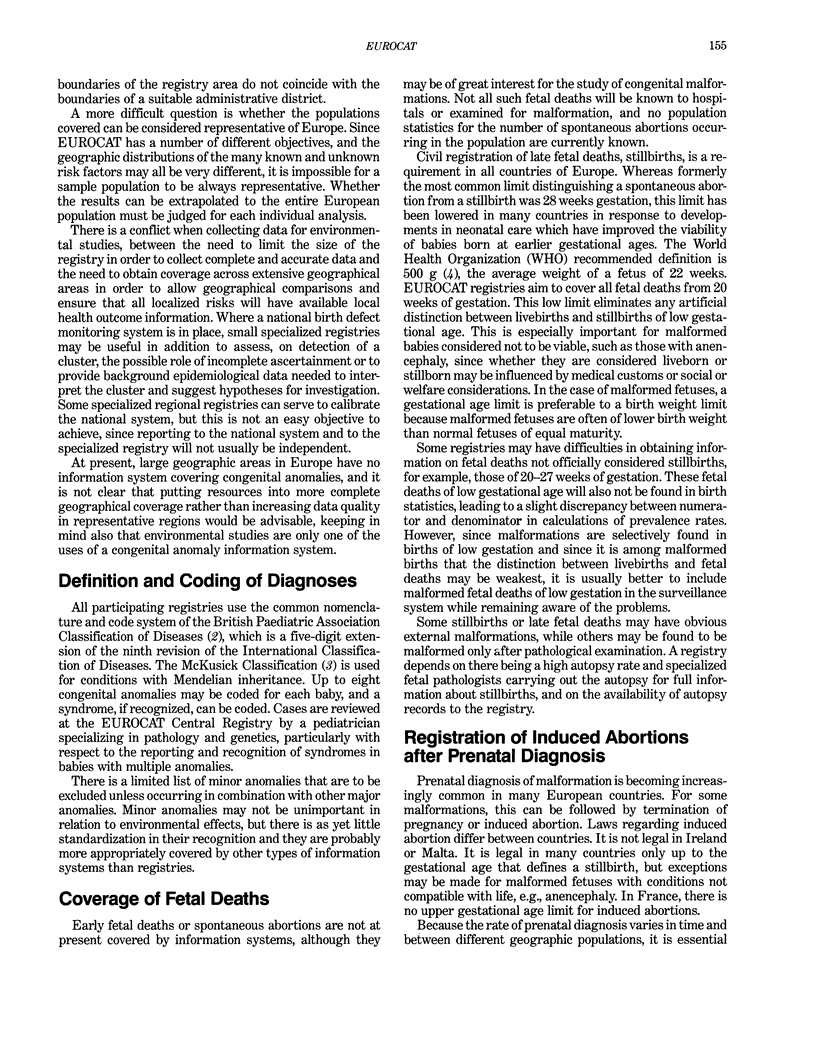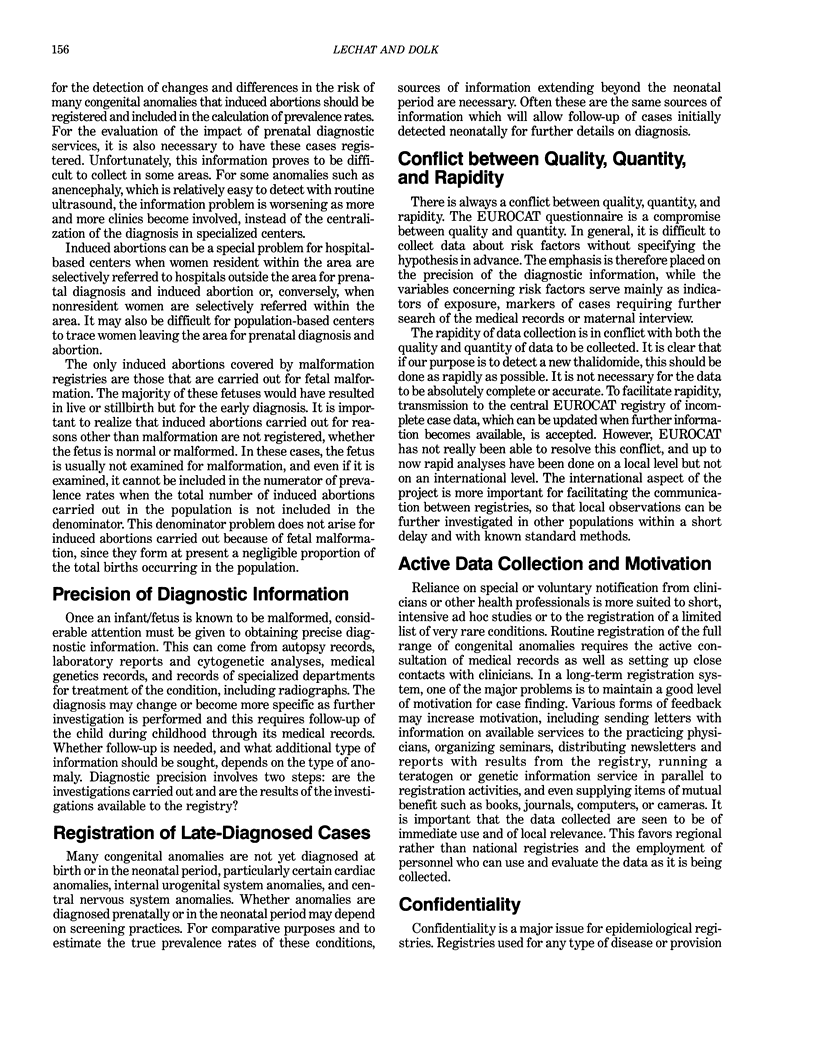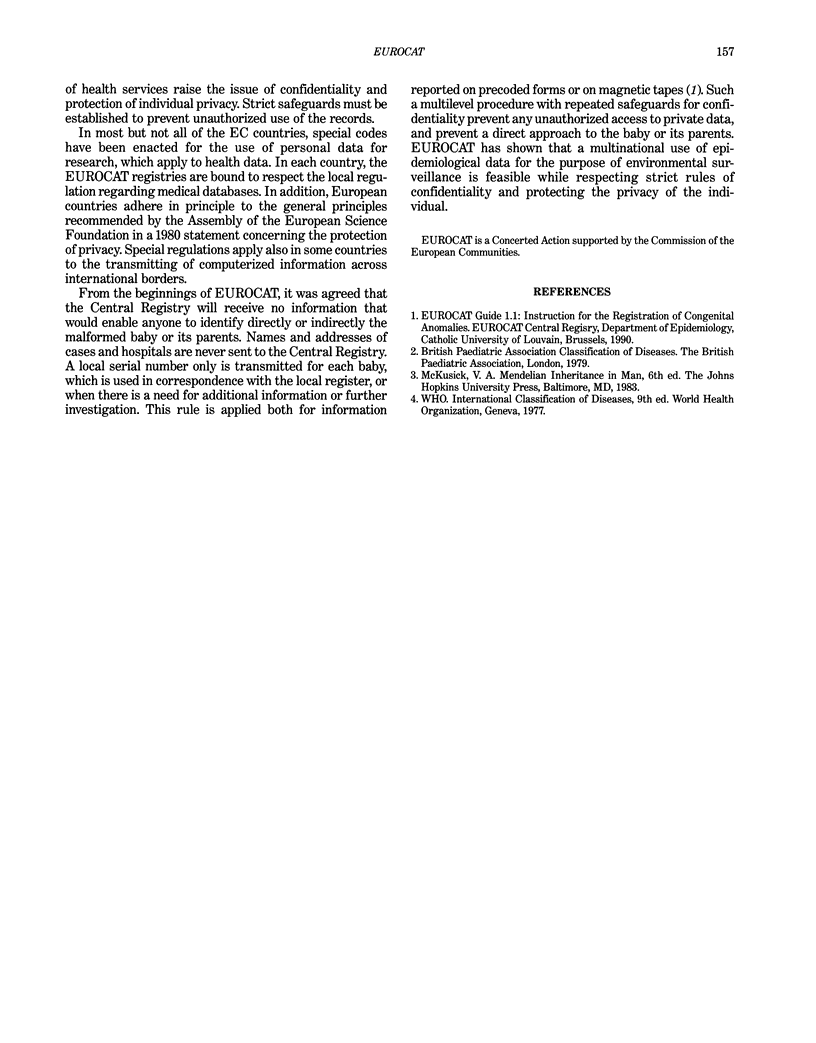Abstract
Congenital anomalies are one of the potential adverse effects of the environment on reproductive health. Registries of congenital anomalies are useful to detect abnormal frequencies, clusters, and trends. Such registries should meet a number of conditions, including an appropriate population denominator, an efficient system for collecting information, standardized diagnostic procedures, postmortem examinations of still-births, and linkage of records. The EUROCAT (European Registration of Congenital Anomalies and Twins) program is a Concerted Action of the Commission of the European Communities initiated in 1979. One of its objectives is the surveillance of congenital anomalies as related to environmental hazards. This surveillance system covers at present 350,000 births per year in 15 countries. A number of problems encountered in the development of EUROCAT and in the course of ongoing activities are reviewed: populations coverage, classification of malformations, coding, definition and coverage of late fetal death, registration of induced abortion, validation of diagnostic information, registration of late diagnosed cases, and maintenance of motivation in data collection. The issue of confidentiality and the need for strict safeguards for the protection of individual privacy are emphasized.
Full text
PDF